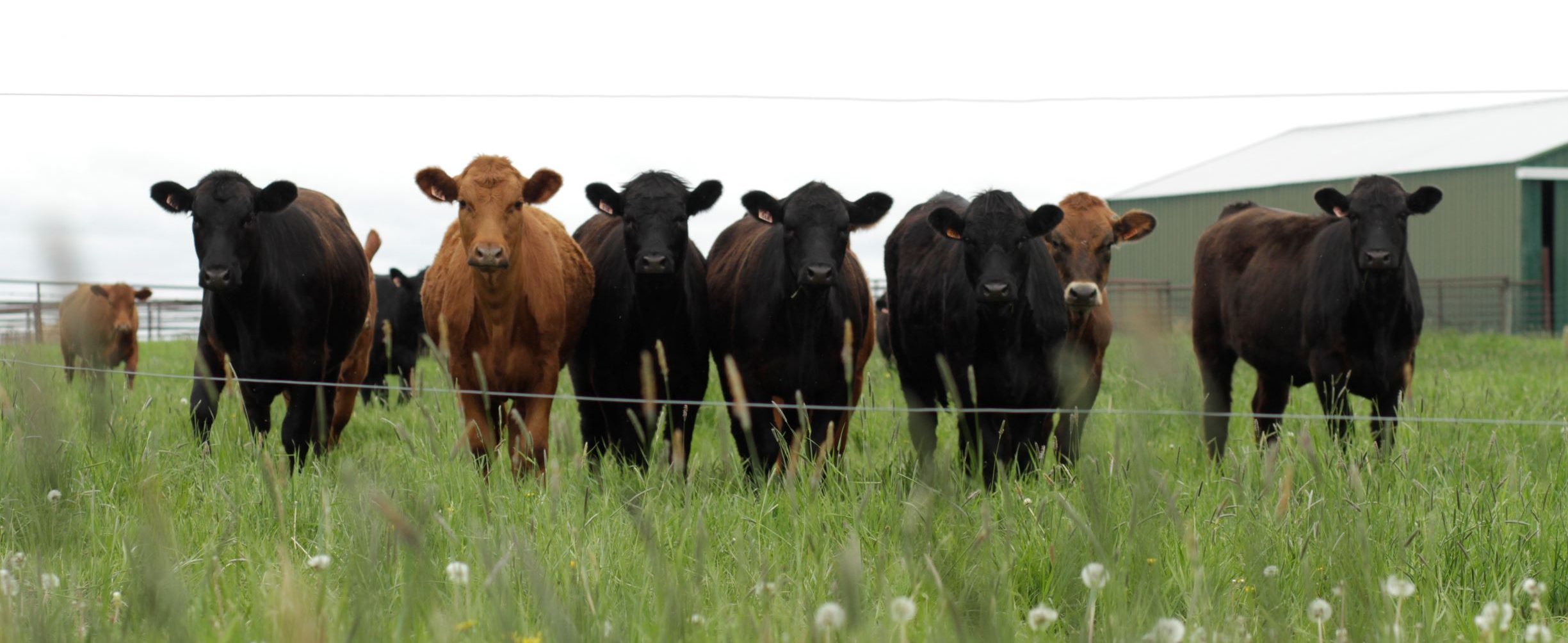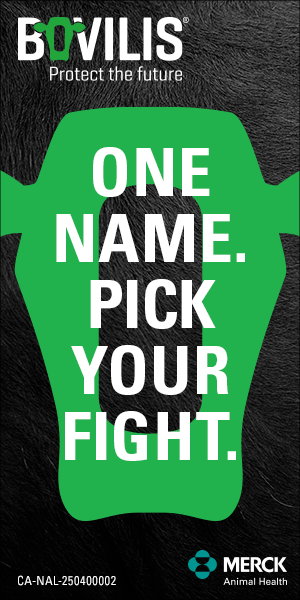AB Direct - Steers
Rail: 495.75-501.50 FOB feedlot (last week)
AB Direct - Heifers
Rail: 495.75-501.50 FOB feedlot (last week)
US Trade- Steers
Rail: 365.00-368.00 (NE, IA) last week
US Trade - Heifers
Rail: 365.00-368.00 (NE, IA) last week
Canadian Dollar
0.27

Raising replacement heifers — what does it cost?
This article was originally posted on the Beef Cattle Research Council’s website on September 13, 2023.
Understanding the cost of developing replacement heifers is crucial for informed decision making. The most significant factor in heifer development cost is the opportunity cost of foregoing revenue from selling calves at weaning. Each heifer kept for the breeding herd is one less calf to sell in the fall — the cost of the opportunity for fall revenue that’s being given up.
With cattle prices currently at record highs, the opportunity cost is at its peak. Producers should consider the long-term economic implications of raising replacement heifers and remain aware of potential market volatility throughout the heifer’s lifespan.
Are you looking for a simple tool to calculate the cost of developing replacement heifers? The Beef Cattle Research Council (BCRC) Replacement Heifer Calculator is a decision-making tool adapted from a calculator originally developed by the Western Beef Development Centre.
Replacement Heifer Calculator
The Replacement Heifer Calculator estimates the costs of developing a replacement heifer from weaning, through breeding to preg-checking. The calculator provides estimates of total development costs and a break-even selling price for bred heifers when you input relevant information such as weaning date, cattle prices, expected breeding performance, feed and nutrition costs, veterinary expenses, and other associated costs.
Key cost components considered in the calculator include:
- Opportunity cost (forgoing shorter-term revenue from the animals)
- Feed and bedding costs
- Grazing cost
- Breeding cost
- Other expenses
- Health and veterinary expenses
- Yardage
- Capital cost
- Death loss
The total cost is adjusted by conception rate and open heifer sales. Bred heifers will bear the cost of developing the opens, while the cost to develop bred heifers will be decreased by the expected revenues from selling the open heifers.
Example: 2022-born heifers
For instance, let’s consider an example with 2022-born heifers. Suppose there were 50 potential replacement heifers selected at weaning on November 1, 2022, with an average weaning weight of 550 pounds. The opportunity cost of keeping these heifers was $1,238/head, based on an average heifer calf price of $2.25/lb in Alberta.
After weaning, the heifers go on feed for 212 days (November 1 to June 1). Assuming these heifers were fed 18 pounds of hay, and three pounds of grain per day, with hay prices at eight cents per pound ($176/tonne) and grain at 14 cents per pound ($309/tonne), winter feed cost is at $394/head. Adding the cost of bedding at $15/head (500 pounds at three cents per pound), and year-round minerals at $30/head, total feed and bedding cost adds up to $439/head.
Assume pasture turn-out date will be on June 1, 2023. The heifers will be exposed to natural breeding with bulls during the grazing season and preg-checked on October 15. The grazing period form June 1 to October 15 is 136 days, with grazing cost projected at $1/head/day for a total of $136/head. The cost of natural breeding is based on breeding bull price ($5000/head), number of heifers serviced per year (20 head), number of years used (4 years), annual bull cost ($500/head), semen tests and vaccinations ($125/head), less bull salvage value ($2,280/head). The estimated breeding cost is $65/head.
Other expenses to be considered at veterinary and medicine costs of $15/head for vaccines, pre-checking and other medical expenses; yardage at $191/head; capital cost at $13/head (three per cent interest rate for weaned calf value for the wean-to-preg-check period), and cost of a two per cent death loss of $25/head. The total cost in this example amounts to $2,144 per heifer being developed. Adjusting for a 10 per cent open rate, the cost for each bred heifer would be $2,382 assuming bred heifers will bear the cost of developing the opens. If open heifers are sold after preg-checking, bred heifer development cost is partially offset by revenue from open heifer sales. With a projected revenue of $2,280 per open heifer ($2.40/lb x 950 lb), the cost is reduced to 42,129 per bred heifer developed.
Remember, the example above is intended to demonstrate the calculation steps. Make sure to adapt the calculations to your operation and use your own on-farm numbers.
Record-high calf price equals record-high opportunity cost
Keep in mind that the example above is based on the 2022 calf crops. Cattle prices have surged significantly since then to new record highs. In May 2023, heifer calf prices surpassed $3/lb, up 52 per cent year-over-year. If a producer’s projected heifer calf price is at $2.80/lb in the fall, the opportunity cost of retaining the 2023-born heifers would rise to $1,540/head. This leads to an estimated cost of $2,482/bred heifer, while keeping other variables steady, including feed and bedding at $439, grazing at $136, breeding feeds at $65, other costs at $281, and adjusting for opens.
Record-high calf prices now do not equal record-high returns in the future
Raising replacement heifers is a substantial financial commitment with long-term profitability implications. The cost of development is only one side of the equation; returns over the heifer’s lifespan must also be considered.
If a heifer is weaned in the fall of 2023, it typically takes two years until she producers her first calf which would be expected in the spring of 2025. Considering the current record-high prices, producers should exercise caution due to potential downside risks in the future.
Assuming the average price during the heifer’s lifespan is $2.77/lb for 550 lb calves (a 25 per cent increase from the 2014-2022 Alberta steer and heifer average of $2.21/lb), with an annual cow cost of $1,000/cow, it would require seven consecutive producer years to recover the initial development cost of $2,482 for this heifer.
If average calf prices increase by another 10 per cent to $2.99/lb, the pay-back-period is estimated at six years for the 2023-born heifers.
However, if average calf prices only increase 15 per cent from the 2014-2022 levels to $2.54/lb, the pay-back period increases to eight years.
Adjusting the cost assumption for a lower-cost operation so that annual cow cost is at $800/head and cattle prices still increase by 25 per cent from the 2014-2022 levels, the pay back period is estimated at five years.
Bottom line
In addition to raising replacement heifers, producers should be open to alternative options such as purchasing breeding heifers, cows, or cow-calf pairs.
The decision involves more than just economic factors; it also takes into account land, labour, and capital capacity, as well as feed, pasture, facility availability, biosecurity, and disease risks. Long-term goals for genetics and cattle performance should also be carefully considered.


